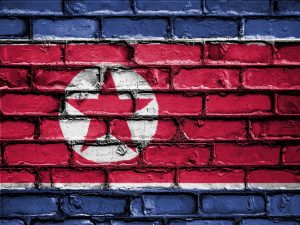With the world on high alert due to the recent spread of the Omicron variant of COVID-19, North Korean authorities are focusing all their energy on bolstering quarantine efforts.
The Daily NK reported yesterday, citing a source in North Hamgyong Province, that the Central Emergency Anti-epidemic Headquarters issued an order to quarantine headquarters nationwide on November 28, calling on them to strengthen quarantine efforts and take thorough measures to deal with the situation.
In North Hamgyong Province, the authorities responded the same day with an emergency meeting of officials ranked section chief and above from provincial and city quarantine stations, provincial and city hospitals, and local clinics. The meeting ordered doctors to take thorough measures and manage their domains to prevent fever patients from emerging within their jurisdictions.
In particular, it stressed that doctors visit households in their jurisdiction twice a day from November 29 – the very next day – to check for fever or other symptoms, and immediately report their results to hospitals and quarantine stations.
The source said doctors were also threatened with punishment if fever patients emerged in their districts, or if they failed to quickly identify patients with suspicious symptoms and take appropriate measures. Specifically, the source told Daily NK that they were threatened with transfers to rural hospitals or even being stripped of their credentials, depending on the severity of their mistake.
North Korea has been using the “section doctor system” – where doctors are in charge of seeing patients in a particular area – to prevent the spread of COVID-19 since the start of the pandemic. However, there is reportedly considerable public discontent with the arrangement.
The section doctor system began from the Seventh Meeting of the Second Supreme People’s Assembly in February of 1960. The meeting called for “complete, general free medical treatment” throughout the country. The authorities officially declared the launch of the new system during the Fourth Party Congress in September the following year.
Later, the authorities planned even denser systems of healthcare, including a “residential system” based on places of residence and a “workplace system” based on factories and enterprises.
However, free medical treatment has existed in name only since the 1990s, as has the section doctor system. While doctors have been visiting families in their jurisdictions in the morning and afternoon to check temperatures, they are reportedly showing little interest in treating sick patients.
The source said doctors are only taking daily temperatures, providing no medication for complaints. He ruefully added that doctors are showing exclusive interest in fevers as they face punishment for outbreaks in their areas of responsibility.
Meanwhile, Daily NK has reported that the Central Committee’s Organization and Guidance Department issued an order on November 14 calling on the Central Emergency Anti-epidemic Headquarters, Ministry of State Security, and General Staff Department of the Korean People’s Army to strengthen quarantine rules along the Sino-North Korean border.
According to a high-ranking Daily NK source in North Korea, the order calls for strengthening border security during the winter and strict bans on drawing water from the Yalu River.
During the winter, local residents reportedly walk on the frozen river to the deep middle section, where they break the ice to draw water for use at home.
Last August, the Ministry of Social Security declared a buffer zone extending one or two kilometers from the “border closure line,” warning that people or animals that enter the zone in a disorganized way would be “unconditionally fired upon.”
However, even after the declaration, ordinary people living near the Yalu River, security guards from nearby schools and businesses, and other individuals who received prior permission continued to go to the river to draw water. This is because in certain border regions with poor waterwork facilities, residents have no alternative to river water for their daily use.
However, the North Korean authorities’ recent ban on drawing water from the Yalu in winter appears largely aimed at preventing smuggling over the frozen river.
Smuggling activity usually increases in North Korea’s border regions in winter, when the rivers freeze. Even last winter, when North Korea closed the border and strengthened patrols, smuggling continued along the Yalu River.
With the latest order being relayed through the Central Emergency Anti-epidemic Headquarters, Ministry of State Security, and General Staff Department to regional quarantine authorities, the border guard, the Seventh Corps, and other organizations, it would seem expectations regarding the restart of trade have been immediately put on hold as well.
North Koreans had hoped that trade restrictions would be relaxed around the time of the Lunar New Year, but that seems less likely to happen for now.
However, the authorities cannot completely eradicate smuggling despite tougher border controls. The source said that even now, smugglers along the border tend to use Chinese yuan, and that smuggling would continue one way or the other, no matter how the authorities attempt to close and enforce the border.
This article is a compilation of two reports that first appeared on Daily NK, which contacts multiple sources inside and outside North Korea to verify information. The Diplomat was not able to verify the claims independently.































